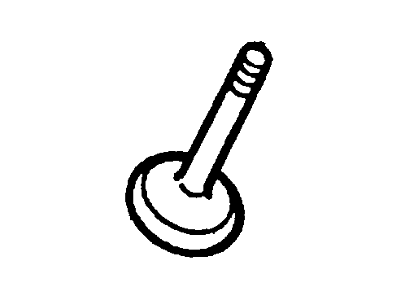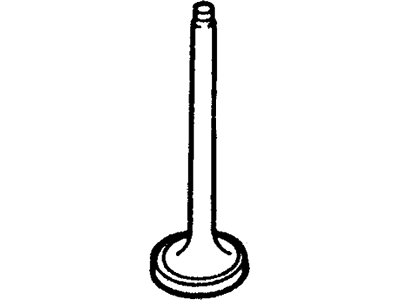

My Garage
My Account
Cart
Genuine Ford Bronco II Intake Valve
Engine Intake Valve- Select Vehicle by Model
- Select Vehicle by VIN
Select Vehicle by Model
orMake
Model
Year
Select Vehicle by VIN
For the most accurate results, select vehicle by your VIN (Vehicle Identification Number).
2 Intake Valves found
Ford Bronco II Intake Valve
There being some problems with Ford Bronco II Intake Valve, they are very vital in determining the performance of the vehicle's engine and the combustion process. Its main role is to control the stages for the admittance of air and fuel mixture into the engine with an aim of achieving maximum power. It is equally important to maintain the intake valves in order to avoid any opportunity for poor combustion as well as a weakened engine power. In Ford Bronco II models, the operation of the intake valve is such that there is the opening of the valve followed by closing and this process is controlled by the help of the valve springs and the retainers. Since the intake valve is a critical element of the engine and in case when it is damaged, one has to spend a lot of money to repair the engine, it is necessary to change it in a shortest possible time. Although the overview does not indicate the various categories or types of intake valves adopted in the Ford Bronco II cars, the procedure of replacement is uniform, hence, stressing on suitable installation to ensure the reversal of the loss of engine firmness.
We provide a wide range of Ford Bronco II Intake Valve at the best prices possible. If you need Ford Bronco II Intake Valve, you can shop with confidence on our website. All our OEM parts come with a manufacturer's warranty and are delivered to your door step with a fast delivery service.
Ford Bronco II Intake Valve Parts Questions & Experts Answers
- Q: What is the significance of valve adjustment in engine performance on Ford Bronco II?A:Valve displacement dictates the size by which the valves extend into the cylinder while the time for which the valve remains opened or closed is equally critical. In the case where valve clearance is set too high the following consequences are possible: increased wear of the camshaft and incomplete opening of the valve, the appearance of a tapping sound from the valve mechanism and unsatisfactory work of the engine due to limited gas exchange. Inadequate clearance, on the other hand, results to poor seating of the intake and exhaust valves leading to leakage of gases in the combustion chamber and consequent heating of the valves, and since there is little heat transfer, the valves might end up being warped. Its important that the adjustments be accurate but it is better for the valves to be slightly big rather than small to avoid burning. Since both 2.0L and 2.3L are gasoline engines, they have a hydraulic valve train that requires no periodic adjustments. Some general changes include; 2.2L and 2.3L diesel engines require the following; warm up the engine, take off the valve cover, check head bolts, for torque and then only adjust the selected valves at Top Dead Center. When adjusting the stacks, one removes the lock nuts, rotates the adjusting screw clock wise or anti-clock wise to hit the standard specified clearance and ensures the all the stacks are clean before they are re-fixed on the plates. On the 2.4L engine, it is done on cold engine that calls for disconnecting the battery, withdrawing the rocker arm cover, and adjusting the intake and exhaust valves to correct clearance using the feeler gauges. 2.9L usually does not need adjustments and when it does the process it entails positioning of your cams, removal of screws and very delicate adjustment until you get the right plunger position. Moreover, the above 4.0L engine incorporates a hydraulic roller valvetrain, which does not require adjustment after some times.









